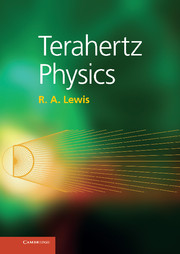Book contents
- Frontmatter
- Dedication
- Contents
- Preface
- 1 INTRODUCTION
- Part I Basics
- 2 OSCILLATIONS
- 3 COMBINING OSCILLATIONS
- 4 LIGHT
- 5 MATTER
- 6 INTERACTION OF LIGHT AND MATTER
- Part II Components
- Part III Applications
- Appendix A Prefixes
- Appendix B Mathematical symbols
- Appendix C Mathematics
- Appendix D Further reading
- Glossary
- Index
- Miscellaneous Endmatter
3 - COMBINING OSCILLATIONS
from Part I - Basics
Published online by Cambridge University Press: 05 July 2013
- Frontmatter
- Dedication
- Contents
- Preface
- 1 INTRODUCTION
- Part I Basics
- 2 OSCILLATIONS
- 3 COMBINING OSCILLATIONS
- 4 LIGHT
- 5 MATTER
- 6 INTERACTION OF LIGHT AND MATTER
- Part II Components
- Part III Applications
- Appendix A Prefixes
- Appendix B Mathematical symbols
- Appendix C Mathematics
- Appendix D Further reading
- Glossary
- Index
- Miscellaneous Endmatter
Summary
This chapter uses a lot of trigonometry. And very little else.
In the last chapter we met oscillations. In this chapter we will see what happens when we combine oscillations.
We have already seen, in passing, two examples of combining oscillations. The time-bandwidth theorem concerns oscillations with a range of frequencies and says that the spread in time goes up as the spread in frequencies goes down. The Fourier theorem says that by combining oscillations of fixed frequencies – all multiples of a fundamental frequency – an oscillation of arbitrary profile is constructed. These two examples may involve many oscillations, even an infinite number. We will take a step back in this chapter and restrict ourselves to combining two oscillations.
Underpinning all our calculations is the assumption that to combine oscillations we simply add them together. This is called the principle of superposition.
We begin with the simple and proceed to the complex. We will start by combining oscillations that have a lot in common, then move on to oscillations that have less in common. We saw in Chapter 2 that three key properties characterise an oscillation: frequency, amplitude and initial phase. We will begin by combining oscillations that have the same frequency, amplitude and initial phase, then move on to oscillations that differ only in amplitude, or only in frequency, or only in initial phase.
- Type
- Chapter
- Information
- Terahertz Physics , pp. 25 - 53Publisher: Cambridge University PressPrint publication year: 2013

